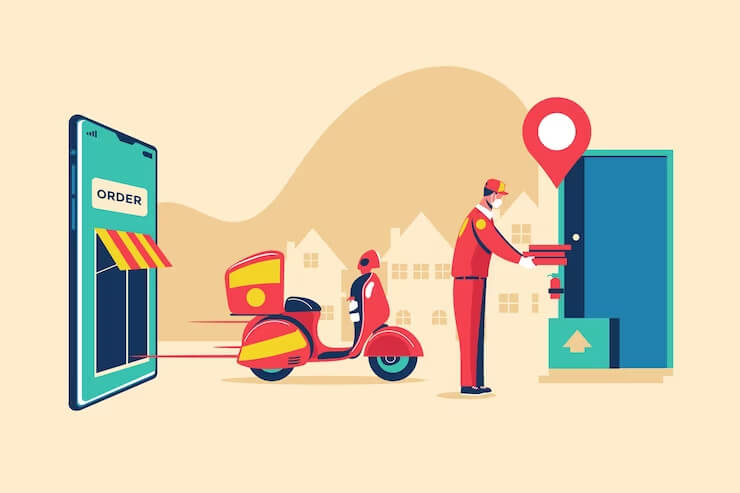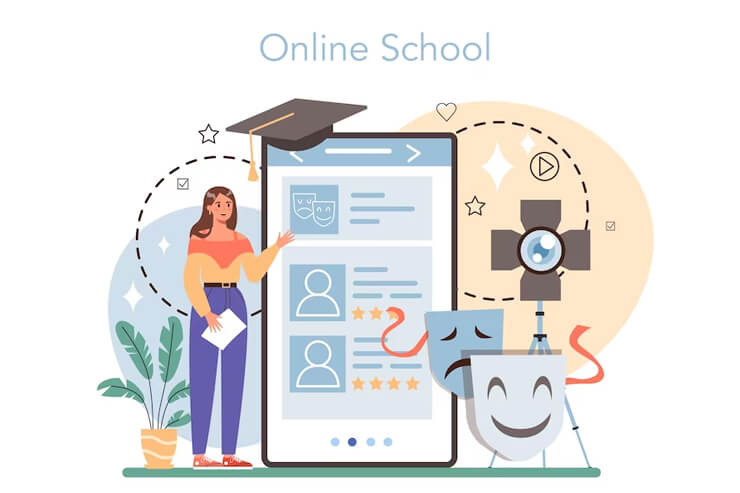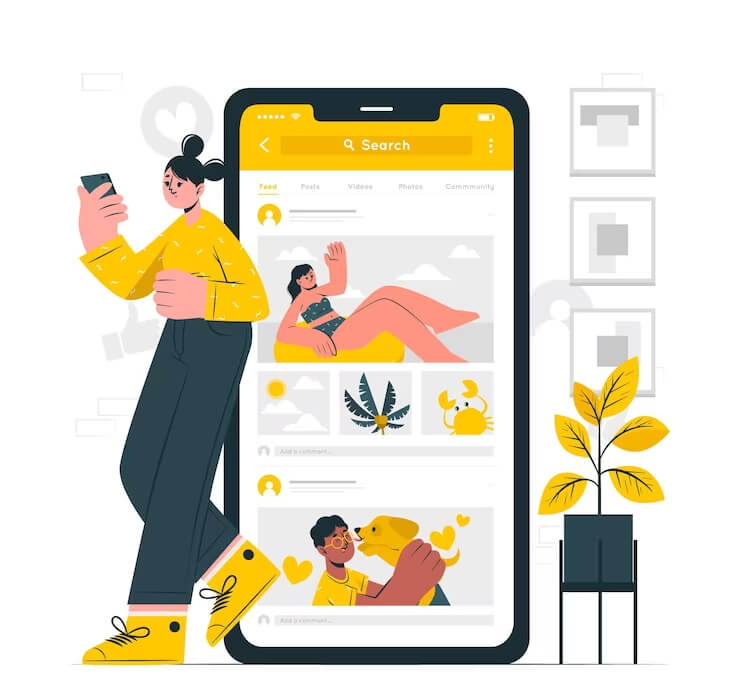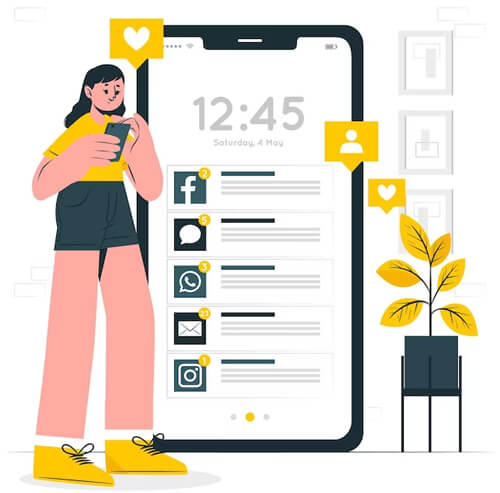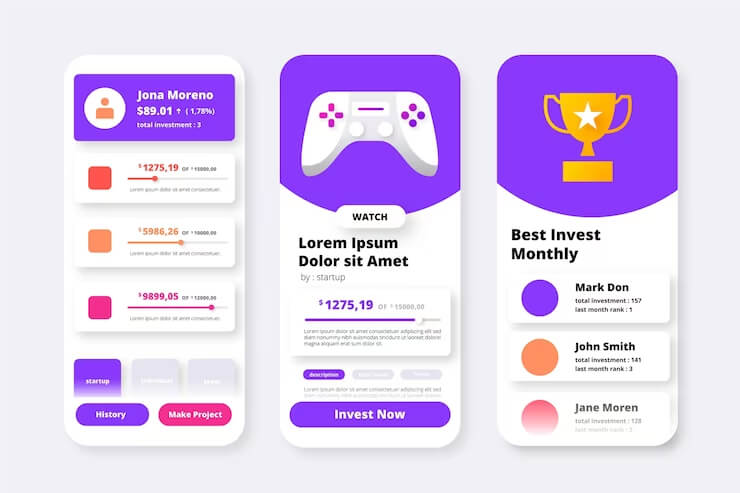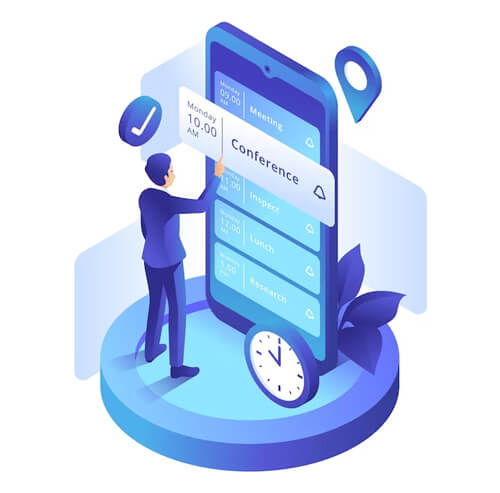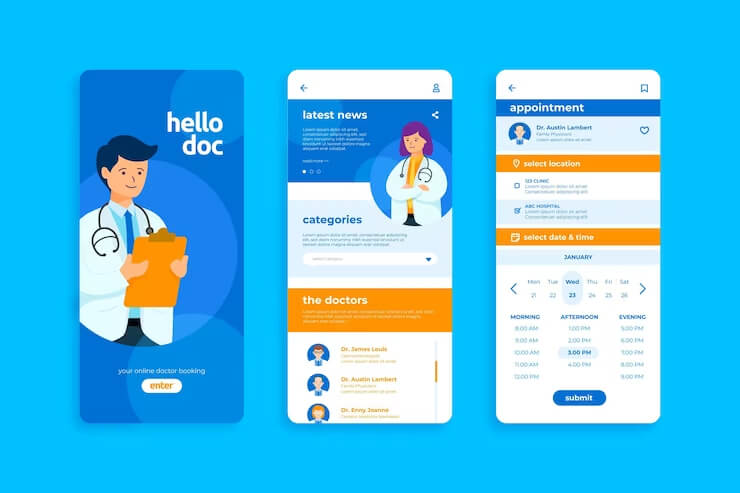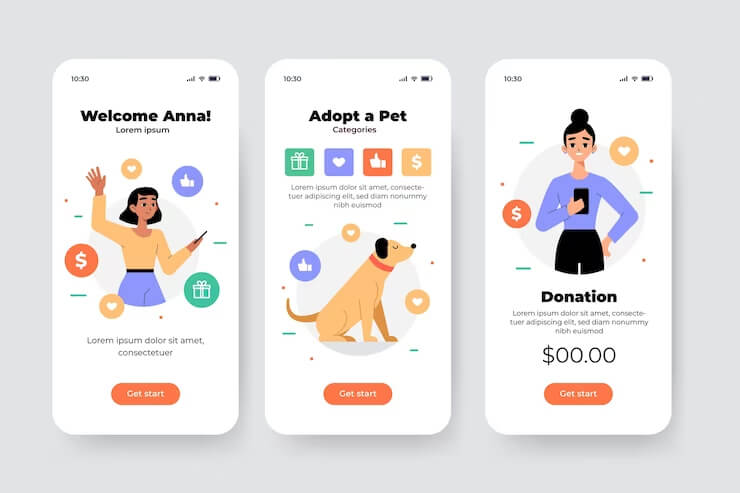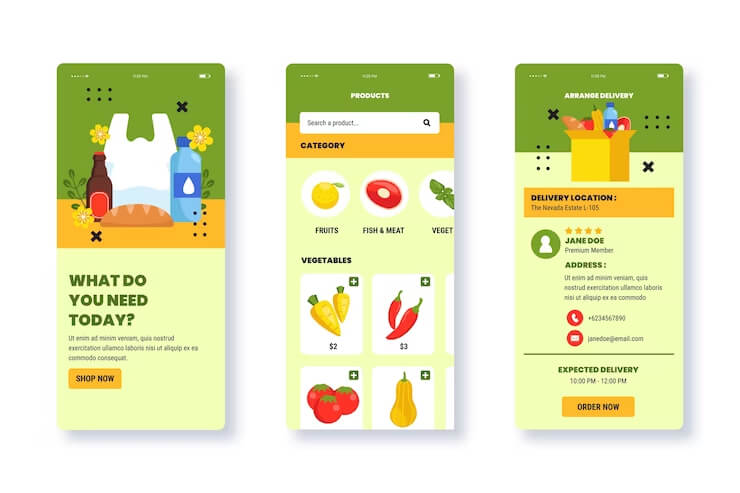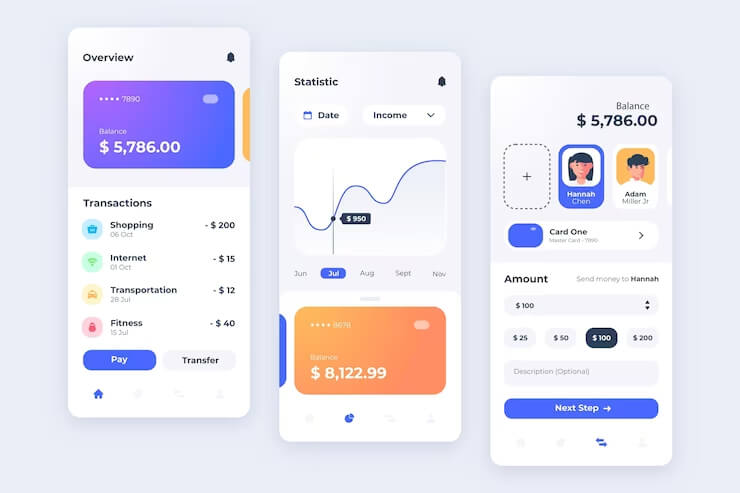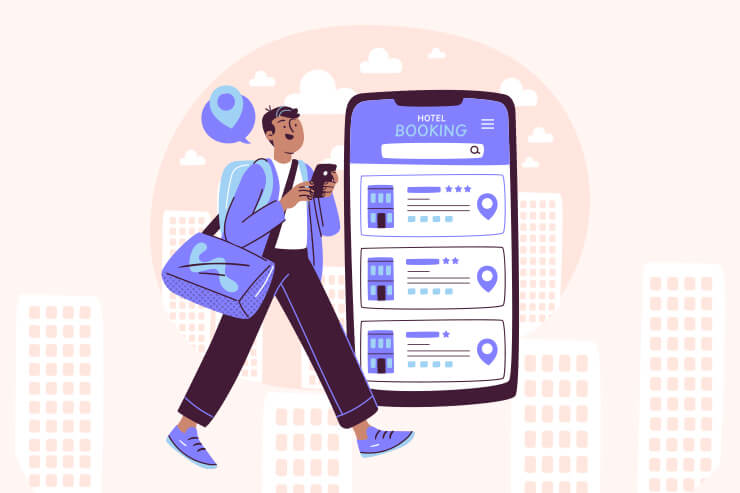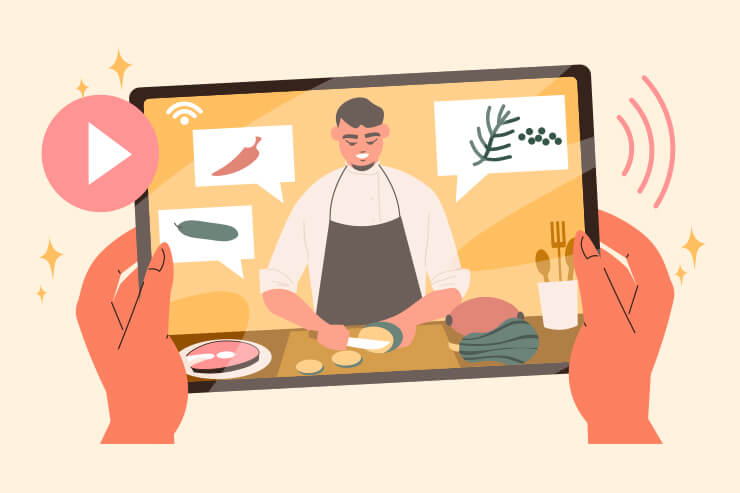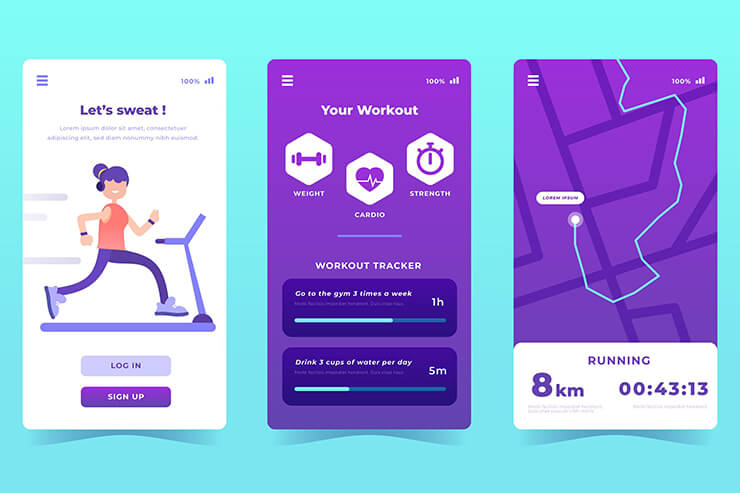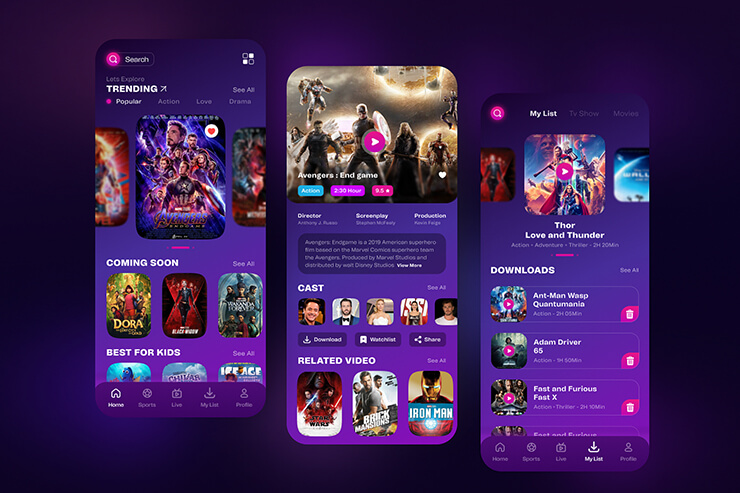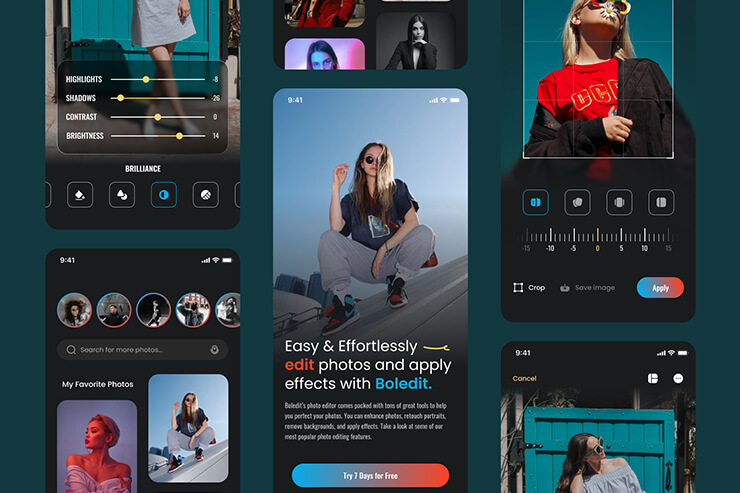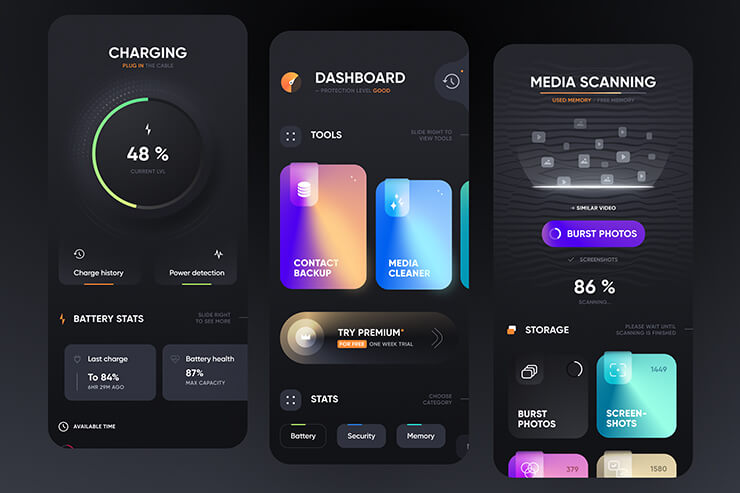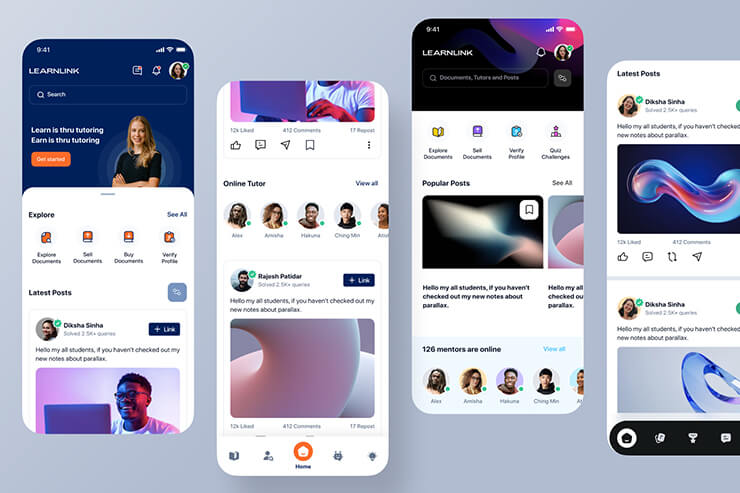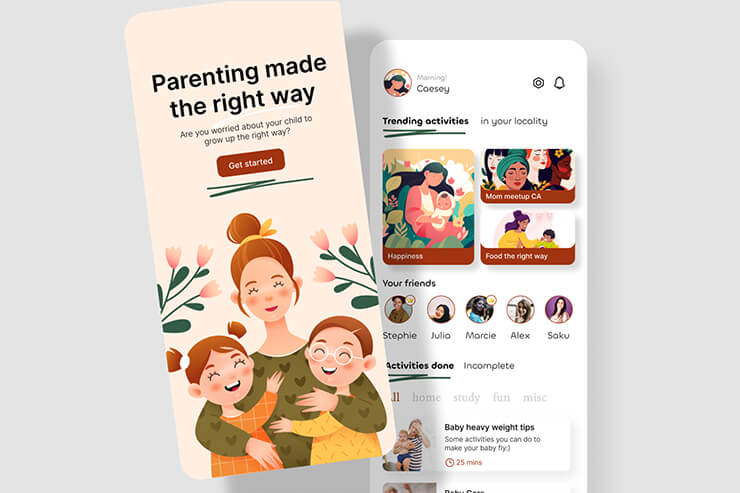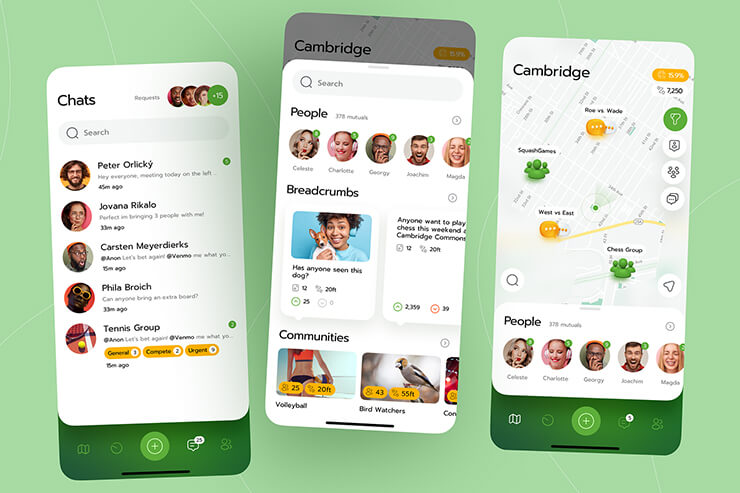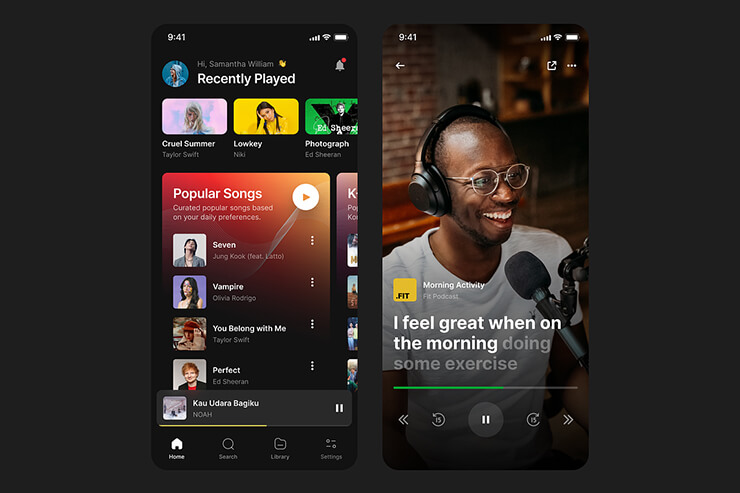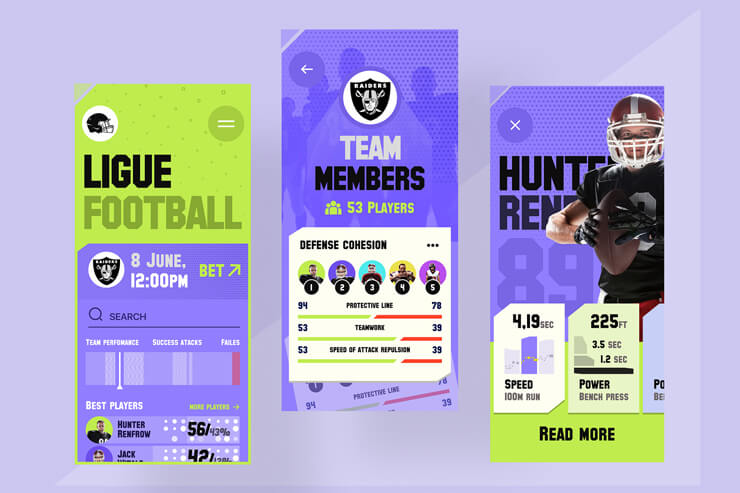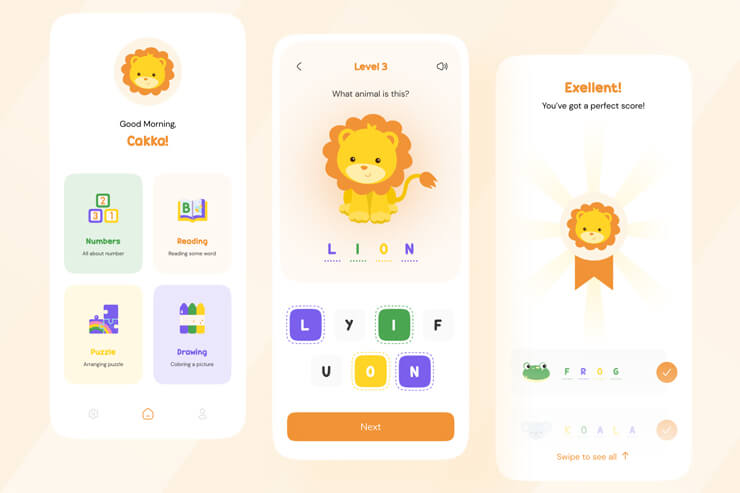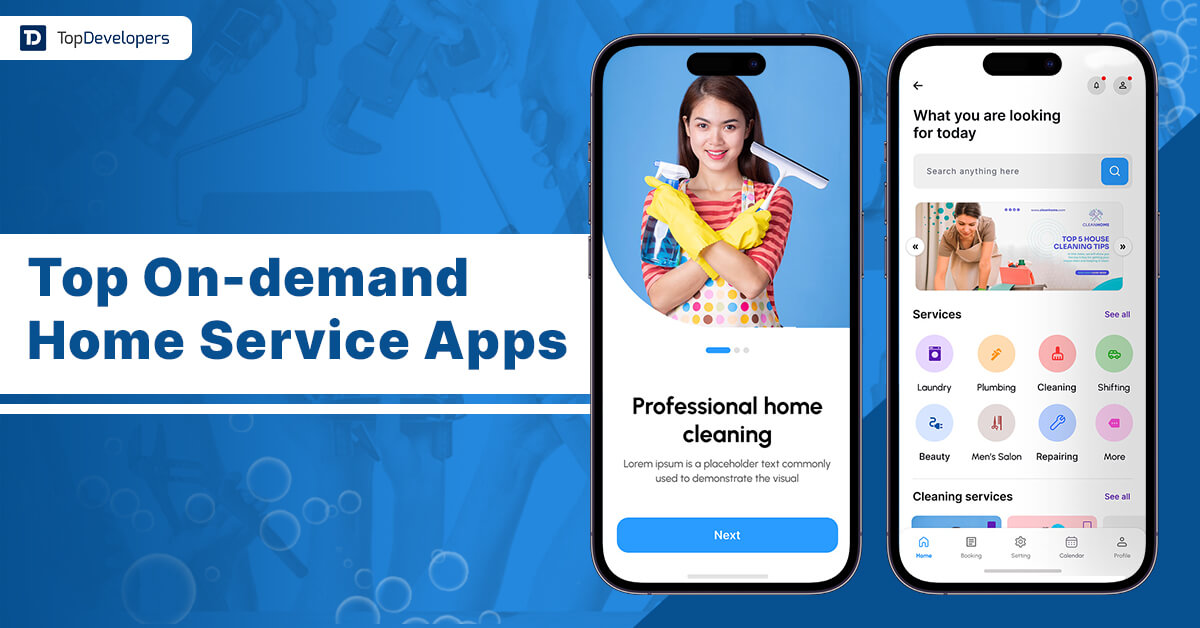
In 2024, there will be over 4 billion apps across Android and iOS app stores, which are expected to generate $250 billion in revenue. This number indicates that mobile apps have become an integral part of people’s lives. The overwhelming presence of mobile apps in people’s lives is pushing businesses to build mobile apps using the latest technology trends.
Mobile apps in different categories serve businesses in various industry verticals. With many mobile app categories, millions of businesses are reaching new heights with improved traffic, conversion, and revenue. The blog will help you brainstorm app ideas and build a new app in one of the most popular app categories.
Table of Contents
Top Mobile App Categories to Consider in 2024 and Beyond
There are a lot of mobile app development categories revolving around the mobile landscape, but only a few categories help you bring epic success.
Here are the trending mobile app categories you can choose from to develop an app to become popular and successful.
Restaurant and Food Delivery
The birth of food delivery services for restaurants and food outlets followed by the Uber launch is now all over the globe. One of the most popular app categories faced some challenges due to lockdowns, changes in government regulations, and upgraded customer behavior. Still, those who adapted to the shift continued to thrive in the present and in the future.
The figures state that the food delivery market size grow to $320 billion by 2029 and is expected to generate $0.91 trillion in revenue.
The immense growth and revenue gear up the restaurateurs to start providing the service with mobile applications. The trending app category provides more control over the business and increases profit margins as no third-party service eats up a percentage of the transaction as commission. The dedicated restaurant and food delivery service app is a good idea to manage delivery orders, send personalized offers, and run a loyalty program.
Examples of popular restaurant and food delivery apps: Swiggy, Zomato, Faasos, Holachef, and Dunzo.
Educational
Education apps come in a variety but they educate and inform everyone in a nutshell. When we look at the types of education applications, e-learning apps are on the rise. The education industry has found the usability of education apps beyond schools and universities. The increase in enrollment at Udemy and increased signups at Duolingo is evidence of how seriously people are taking these e-learning apps.
E-learning apps focused on children are also launched covering their subjects, which aims to make the subject easily understood with animation and music. Kids Learning Tube is a good example of the same. The increased downloads in the education segment that reached $4.99 billion in 2022 are expected to bring $9.55 billion in revenue by 2027. Significant spikes in education app usage indicate high adoption of the learning apps by the users. It makes perfect sense to build an education app which is a trending app category in countries such as the USA.
Examples of popular Education apps: Duolingo, Sololearn, Photomath, edX, and Khan Academy.
Lifestyle
Lifestyle apps cover a broad category of apps that are good to be there to support your lifestyle. The lifestyle category for mobile app development encompasses fitness apps, dating apps, music apps, travel apps, food apps, and more. The apps make lives better in sync with users’ present lifestyles.
For example, when people want to dine at a specific table in their favorite restaurant and expect to get the dishes ready before they reach the restaurant, lifestyle apps help them get it done at the tap on their mobile device. Besides, taxi/cab booking services such as Uber can help you get a special type of vehicle booked for a specific date and time with amenities pre-determined. Also, Fitness apps help to live a healthy lifestyle.
Examples of popular lifestyle apps: Daylio, Amazon Alexa, Tuya Smart, Headspace, and Fliqlo.
Social Media
Nearly 59% of the world’s population uses social media and spends nearly 2 hours and 31 minutes on different social media channels. It indicates people are using social media at scale to connect with diverse people inside and outside their social circles. The facility to share images, videos, and messages instantly has made social media apps a part and parcel of their lives globally.
Businesses are launching new social media apps with unique functionalities for target audiences that are helping them gain major traction among users and increase the number of app downloads. Instagram, WhatsApp, Twitter, and Facebook are popular platforms for sharing images and short video snippets. Taking a step ahead, businesses are adding social sharing functionality to boost app usage and user engagement. Strava app that tracks user activities allows users to share their scores within social channels, which motivates them to increase their scores.
Everything You Need To Know About Social Media App Development
Game
The game apps in the entertainment industry are very competitive and crowded with millions of apps. The game app category comprises various apps that target different audiences and are played distinctively (Solo or in a group). Amidst the sea of apps, the game apps bring a high share of revenue accounting for 61% on iOS and 77% on Google Play.
The extension of monetization methods from premium downloads to in-app purchases, subscriptions, and other upgrades is followed by the expansion of game genres. With a low barrier to entry, mobile games vary from hyper-casual to action, adventure, and highly detailed RPG games. The emerging technology leverage say AR technology in Pokemon Go takes the game to new heights with a large user base and revenue.
Examples of popular game apps: Pokemon Go, Bloon TD6, Candy Crush, Clash of Clans, and Monument Valley.
Productivity
When we hear productivity apps, it seems they are targeted at office employees to boost their productivity. It’s not the case. Productivity apps are a popular mobile app category that aims to simplify complex tasks and help users to get them done quickly and efficiently. For instance, Evernote and Wunderlist are such mobile applications that help you accomplish day-to-day tasks efficiently and easily with a reminder for everything to do in a day.
Some productivity apps are designed to perform one task while some help users to accomplish multiple tasks. For example, the Google Drive app allows users to save and access various types of files across multiple devices. Businesses can find the gap and get it filled creatively with an intuitively designed app that simplifies complex tasks and improves the user experience at the same time.
Business
From SMBs to large enterprises need digital tools to improve day-to-day processes, operations, and workflow. Fortunately, technological advancement has made everything possible on mobile devices which previously required desktops mandatory. From small to core business processes are mobilized and automated with business app development. Entrepreneurs and startup owners understand the importance of having a mobile app for their business and want to reap rich results with it.
For example, Slack, Skype, Microsoft Team, and GoToMeeting are popular for communication, QuickBook, Freshbook, and Wave are popular for accounting, Salesforce and Nimble are famous for customer relationship management, Trello and Asana for project management, and more. All of these business apps are used by businesses at scale. Business app- a trending app category provides a lucrative opportunity that businesses can take up by filling the void uniquely.
Examples of popular business management apps: Slack, Asana, Square, QuickBooks, and Trello.
Healthcare
In the last decade, technological progress has proven to be a boon for the enablement of patient-centric care delivery. The category to develop an app for the Healthcare sector is a wide umbrella that encompasses many types of apps such as appointment booking apps, virtual consultations, pharmacy delivery, diet nutritional tracking, exercise and yoga, mindfulness, and meditation apps.
The global patient-centric healthcare app market is expected to grow at a CAGR of 20.5% during 2023-2028. Post-pandemic, healthcare app usage at scale, which healthcare organizations trying to achieve has become possible. It has helped healthcare organizations to improve healthcare services accessibility, optimize healthcare operations and staff management, and enhance the administration process.
Examples of popular healthcare apps: Doctor on Demand, TelaDoc Health, WebMD, Epocrates, EyecareLive, Heal, MDLIVE, and Apple health.
Pet Care
The rising income level, increasing pet humanization, and favorable reimbursement policies are driving the pet care market size, that is expected to grow to $550 billion by 2032 at a CAGR of 7% between 2022 and 2032. Pet owners are also readily spending to offer quality care to their pets. In the same vein, spending on pet care products will also surge to $145 billion by 2032.
Starting your own pet care business online will help you grow faster and the pet care app plays a vital role in it. Pet care apps such as Vet apps provide many benefits to pet care service providers and pet owners to deliver the best care to their pets. The pet care app category contains many types of apps such as feeding, training, vet, and grooming that help entrepreneurs and pet owners alike.
Examples of popular pet apps: Chewy, Rover, Dog monitor, 11pets, WeRescue, Whistle,PetCube, and BarkHappy.
Grocery Delivery
The grocery delivery app development has skyrocketed in response to Amazon Fresh stores that are promising ultrafast grocery deliveries. The online ordering trend to deliver quickly is another force to make the grocery delivery category a new norm for entrepreneurs looking to create mobile applications for their new venture. The grocery delivery sales is expected to double by 2025 that’s $121 billion in the USA. The trend to purchase groceries through mobile apps is expected to continue in the years to come.
The other trend- click and collect is solving the cost and last-mile logistics problems that grocers are facing. It’s a lucrative entry point for grocery stores to expand their digital footprints and make the business profitable. Businesses should research market and target audience needs to identify the gap and fill it intelligently with grocery delivery app development.
Examples of popular grocery apps: Instacart, Anylist, Zepto, Grofer, Dmart, and JioMart.
Finance
The financial sector has experienced a monumental push in the last decade due to technological progress and government slackening regulations. From banking and insurance to trading companies are adopting mobile applications to enhance customer service, modernize operations, and diminish infrastructure costs. The improved accessibility to banking services has helped in increasing user satisfaction.
The mobilization has helped banks, stock trading companies, cryptocurrency companies, and insurance companies to increase revenue with mobile applications. Hence, the finance category got in trends and business owners are looking to develop a fintech app to step in with the latest trends, meet customers’ needs, and seize an edge in the competition.
Examples of popular finance apps: Mint, wallet, YNAB, EveryDollar, Rocket Money, Personal Capital, and GoodBudget.
Travel
Travel apps eliminate the headache of everything related to travel management by connecting the dots. The apps aim to assist people with finding and booking hotels, flights, and taxis, identifying restaurants in a travel destination, searching for new places to visit, and everything that makes an excursion excellent.
Transforming people’s perspectives from traditional to mobile travel has increased the travel app market size, which will reach $533 million in revenue by 2027. Big data, chatbots, AR/VR, AI, and fintech trends are drastically revolutionizing the future of travel apps with unique functionalities.
Examples of popular travel apps: Airbnb, Uber, Booking.com, Expedia, and Hopper.
Cooking
With smartphones’ rising popularity, there’s an increase in demand for cooking solutions that enable people to access a wide range of recipes and more. Cooking apps transform the way amateurs or professional chefs cook by making recipes accessible and providing cooking tips with nutritional information, making cooking engaging and great fun.
Cooking apps allow users to explore various cuisines, find recipes and the required ingredients, and create shopping lists to order unavailable items. The interactive interface facilitates interaction with cooking enthusiasts, making it an indispensable tool for cooks worldwide. Research shows that usability and convenience will increase the global recipe apps market size to $1103.98 million in 2028, with a CAGR of 12.87% during 2022-2028.
Examples of popular cooking apps: Tasty, Feedly, Yummly, and SuperCook.
Fitness
Fitness fanatics are very conscious about their health and fitness and eagerly track their progress using fitness apps to meet fitness goals. This mobile app category has a broad spectrum of apps, such as fitness tracking, calorie count, heartbeat tracking, steps count, and others. The app suggests exercise or workout based on the user’s health status and eating habits.
With IoT technology leverage, fitness app extensions for wearables are becoming very famous. Smartwatches, smart shoes, and fitness bands continuously track the daily routine and then send data to fitness apps that adjust the exercise routine accordingly. The growing user penetration for health and fitness will increase the fitness app market revenue to $6.86 billion by 2024. The surge in fitness app downloads shows that building fitness apps is a good deal for businesses.
Examples of popular fitness apps: Nike Training Club, Strava, FitOn, Adidas Training, Peloton, and Fitbit Premium.
Entertainment
Entertainment apps offer various forms of entertainment on mobile devices, including playing games, streaming movies, listening to music, engaging in discussion, and more. They enable users to get entertained on the go, which increases the number of entertainment apps downloaded (paid or free) and in-app purchases. According to Statista, total revenue is expected to show an annual growth rate of 10.64%, resulting in a projected entertainment market volume of $53.13 billion by 2027.
With various entertainment apps entertaining users on mobile phones, it’s a golden opportunity to capture users’ attention and increase business ROI with entertainment app development.
Examples of popular entertainment apps: Netflix, Disney, YouTube, HBO Max, TikTok, Hulu, and Amazon Prime Video.
Photo and Video Editing
The proliferation of smartphone users spiked the growth of photo and video editing of multimedia content on smartphones. Photo and video editing apps allow users to enhance and personalize photos and videos with color effects, resizing, filters, or cropping using augmented reality filters, artificial intelligence enhancements, and cloud technology.
The demand for visually appealing and user-generated content will grow the global photo and video editing app market at a CAGR of 11.7% and increase the market size to $30,051.5 million by 2027. These apps facilitate photo and video editing on the go to enable the creation of professional-looking media content.
Examples of famous photo and video apps: Adobe Photoshop Lightroom, snapseed, Cyberlink PowerDirector, and InShot.
Utility
When you check your smartphones, you will find apps that often go unnoticed but have simplified daily routines and enhanced productivity. These utility apps are installed on your phone for note-taking, language translation, time management, file management, weather updates, and more.
Utility apps must have an intuitive interface and be optimized for performance, enabling businesses to stand out from the competition. Consider any one of the utility app ideas to skyrocket your business.
Examples of popular utility apps are Evernote, Google Keep, Todoist, Grammarly, 1Password, and SharePoint.
Libraries and Demo
Do you want to avoid the hassle of visiting a physical library to find a book? Library and demo apps have covered your needs for discovering new books and keeping track of the ones you want to read. Users can access thousands of ebooks and audiobooks in the mobile library, set reading goals, and even participate in reading challenges.
The search for books can be tailored by applying filters such as author, title, or genre. User-friendly features enable customization of the reading experience by adjusting background color, font size, and other things.
Examples of popular libraries and demo apps: Goodreads, Libby, Hoopla, Bookly, and OverDrive.
Parenting
Nowadays, parents sometimes feel overwhelmed when it comes to taking care of their children. Parenting apps take the load off the parents’ shoulders with different functionalities. With a range of apps under this type of app category, parents can monitor their child’s activity when they are left alone, manage the child’s nutrition with easy-to-cook food recipes, turn their phone into a rattle toy that soothes babies, and more.
With parent control apps, parents can limit their children’s screen time by setting a specific time limit and then locking the phone after the time elapses. Such apps allow parents to take care of children aged 1 to 18.
Examples of popular parenting apps: Baby kitchen, Baby Rattle, Baby Monitor g, Appclose, Find My Kids, Baby Connect, Kids360, and Growth Book.
Social Networking
You certainly don’t need an explanation for this mobile app category. More than half of the world’s population, that’s nearly 62%, uses social media networking channels for 2 hours and 20 minutes daily. People use social networking apps to connect and communicate with their friends, family, and peers. They can also share thoughts or information with like-minded people.
You can build social networking apps to increase business profits, as the number of downloads, in-app purchases, and revenue of social networking apps is continuously climbing. Statista reveals that total revenue is expected to show an annual growth rate (CAGR 2022-2027) of 7.30%, resulting in a projected market volume of $189.50 billion by 2027.
Examples of popular social networking apps: Facebook, LinkedIn, Twitter, Instagram, and Pinterest.
Music
Music apps like Pandora and Spotify have reshaped the way music is listened to and its cost. The apps aim to improve music accessibility and enable users to create a custom playlist, stream the whole album, or stream individual songs anytime, anywhere. The music streaming apps are widely accepted in the USA, with 83% of revenue coming from the US region.
With millions of free and paid subscribers, the emphasis is on repeated listening and surpassing physical and digital. Transform how music is distributed with music streaming app development that further helps you generate a good share of revenue.
Examples of popular music apps: Spotify, Apple Music, Amazon Music, SoundCloud, YouTube Music, Freefy, and Pandora.
Sports
Sports enthusiasts like to watch live sports, stay updated with scores, and access other sports-related information on their devices. Sports applications allow users to view instant updates of live matches and even enable access to offline streaming of past matches. An AI-based winning prediction tool, AI chatbots, and GPS features are added, making users install the sports app and pay the rising subscription cost.
With the growing demand for AI-driven solutions in the industry, many AI Sports Software Development Companies are leveraging machine learning, predictive analytics, and real-time data processing to enhance user engagement and improve sports applications.
The global sports app market is expected to grow at a compound annual growth rate (CAGR) of 10.9% from 2023 to 2030. VR, AI, and cloud technologies have gained prominence in the sports space, shaping e-sports events.
Examples of popular sports apps: theScore, Cricbuzz, MLB, ESPNDisney, Sports Alerts, Sofascore, BBC Sport, ESPN, ESPN+, and The All-Star.
Kids
After leaving school, most kids disappear behind their devices once they reach home. Blocking their Minecraft or Subway Surfer is not good, but you can keep on top of your kids’ digital lives by selecting the correct type of app for the right amount of time. The kid app ensures that kids use the screen innovatively, letting them have fun and educating them simultaneously.
Thousands of apps are covered under this app category list according to various age groups of kids, from preschool skill building to art, coding to problem-solving, and emotional learning to cognitive abilities nurturing.
Examples of popular kids apps: Khan Academy Kids, PBS KIDS Video, Arithmagic, My Very Hungry Caterpillar, Metamorphabet, My PlayHome, codeSpark Academy.
Which Mobile App Category will you Choose?
When businesses pour in efforts, time, and money into mobile app development, they expect to get good revenue in return. It’s possible only when the right mobile app category is chosen. Realizing this need, the list of popular mobile app development categories is created based on the latest trends, users’ needs, and future statistics. Get started with the trending category to develop a mobile app that suits your business and make the most out of the opportunity.
For those who want to harness the maximum potential with a specific mobile app category, partner with a reliable mobile app development company that helps you from consultation and conceptualization to the development and deployment of your app idea.
 Avantika Shergil
| May 29, 2024
Avantika Shergil
| May 29, 2024
Avantika Shergil is a technology enthusiast and thought leader with deep expertise in software development and web technologies. With over 8 years of experience analyzing and evaluating cutting-edge digital solutions, Avantika has a knack for demystifying complex tech trends. Her insights into modern programming frameworks, system architecture, and web innovation have empowered businesses to make informed decisions in the ever-evolving tech landscape. Avantika is passionate about bridging the gap between technology and business strategy, helping businesses build customized software and website, and understand about different tools to leverage effectively for their ventures. Explore her work for a unique perspective on the future of digital innovation.
